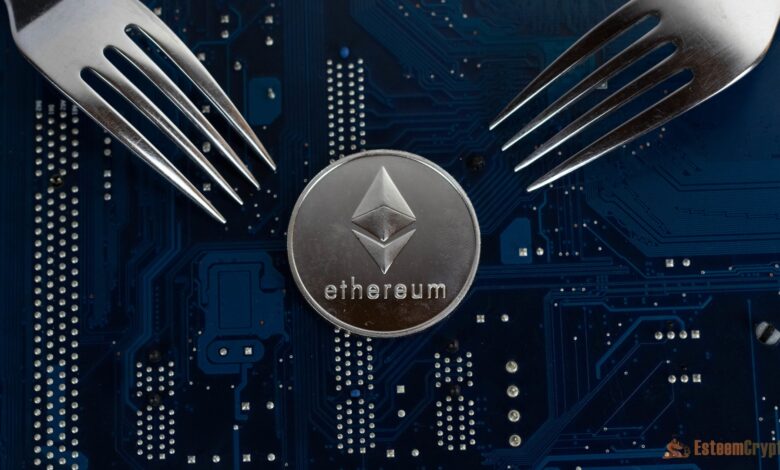Ethereum Fork: A New Chapter in Blockchain Evolution

Ethereum Fork: The Ethereum network, one of the most significant and influential blockchain platforms, has been no stranger to forks—those pivotal moments when the blockchain splits into two separate paths. These forks have profound implications for the entire crypto ecosystem, often signaling shifts in technology, philosophy, and governance. The latest Ethereum fork is no exception, and its ramifications are already being felt across the decentralized finance (DeFi) landscape and beyond.
Understanding Forks
Before delving into the specifics of the latest Ethereum fork, it’s essential to understand what a blockchain fork is and why it matters. In simplest terms, a fork occurs when a blockchain community decides to change the network’s protocol or rules. These changes can be backward-compatible, known as a “soft fork,” or so significant that they create an entirely new blockchain called a “hard fork.”
Soft forks allow the network to continue operating on the identical blockchain, with new rules adopted by those who choose to upgrade. However, hard forks result in a permanent split from the original chain, creating two parallel blockchains with separate histories and futures. This was famously seen with the Ethereum and Ethereum Classic split in 2016 following the DAO hack.
The Latest Ethereum Fork: What Happened?
The most recent Ethereum fork, which took place in 2024, was part of the ongoing transition to Ethereum 2.0, a multi-phased upgrade designed to improve the network’s scalability, security, and sustainability. This fork continues the network’s journey from a Proof of Work (PoW) consensus mechanism to Proof of Stake (PoS), a shift that began in earnest with the Beacon Chain’s launch in December 2020.
Key Features of the 2024 Ethereum Fork
Enhanced Scalability
One of the primary goals of this fork was to improve Ethereum’s scalability. By introducing sharding and other Layer 2 solutions, the network can now handle a significantly higher number of transactions per second. Sharding divides the Ethereum network into smaller pieces, known as “shards,” each capable of processing its own transactions and smart contracts. This parallel processing drastically increases throughput, reducing congestion and lowering transaction fees.
Sustainability and Energy Efficiency
The shift from PoW to PoS has been heralded for its potential to make Ethereum more sustainable. PoW, the original consensus mechanism used by Ethereum, requires vast amounts of computational power and energy to secure the network. PoS, on the other hand, allows validators to secure the network by staking their Ether (ETH), which is far less energy-intensive. The latest fork includes further optimizations to this system, reducing the network’s overall carbon footprint.
Security Enhancements
Security remains a top priority for the Ethereum network. This fork introduces new cryptographic protocols and security measures aimed at protecting the network from both known and emerging threats. These enhancements are particularly important as Ethereum continues to host a growing number of DeFi projects, NFTs, and other decentralized applications (dApps) that require robust security.
Backward Compatibility and DeFi Impact
While the fork brings about significant changes, it was designed with backward compatibility in mind to minimize disruption. Most existing smart contracts and dApps continued to function as before, with developers given tools to adapt their projects to the new environment. This approach was crucial in maintaining the stability of the DeFi ecosystem, which relies heavily on Ethereum’s infrastructure.
Community Reactions and Market Impact
As with any significant update, the latest Ethereum fork has elicited a range of responses from the community. On one hand, many developers and users have praised the scalability, sustainability, and security improvements. The ability to process more transactions at lower costs particularly appeals to the DeFi community, where high gas fees have been a persistent issue.
However, not everyone is entirely satisfied. Some in the community have expressed concerns about the centralization risks associated with PoS. They argue that shifting to a system where those with more ETH have more influence could make Ethereum more centralized, contradicting the core principles of decentralization.
The market reaction to the fork has been mixed. In the immediate aftermath, the price of ETH saw a brief spike as investors reacted to the network’s improved capabilities. However, the price quickly stabilized as the broader market digested the implications of the changes. Over the long term, the impact of the fork on ETH’s price will likely depend on how effectively the network can attract and retain users, developers, and projects.
Looking Ahead: The Future of Ethereum
The latest Ethereum fork is not just a technical update; it represents a critical juncture in the network’s evolution. As Ethereum continues to develop, the choices made today will shape the future of decentralized technology for years to come.
The transition to Ethereum 2.0 is far from over. Future forks and updates will likely continue to refine the network, addressing challenges as they arise. For example, further improvements to scalability through advanced sharding techniques or the integration of even more sophisticated Layer 2 solutions are expected.
Moreover, Ethereum’s success in transitioning to PoS and implementing these upgrades could serve as a model for other blockchain networks. Some projects are already looking to Ethereum’s approach as a blueprint for their upgrades, which could accelerate the broader adoption of PoS and other innovative blockchain technologies.
Conclusion
The latest Ethereum fork is a testament to the network’s resilience and the community’s innovation commitment. Ethereum is positioning itself to remain at the forefront of the blockchain revolution by addressing critical issues like scalability, sustainability, and security.
However, the path ahead is not without challenges. The debate over-centralization, the need for ongoing security enhancements, and the ever-present competition from other blockchain platforms will keep the Ethereum community on its toes. But suppose the network can successfully navigate these challenges. In that case, the future of Ethereum looks bright, with the potential to continue shaping the world of decentralized finance and beyond for years to come.




